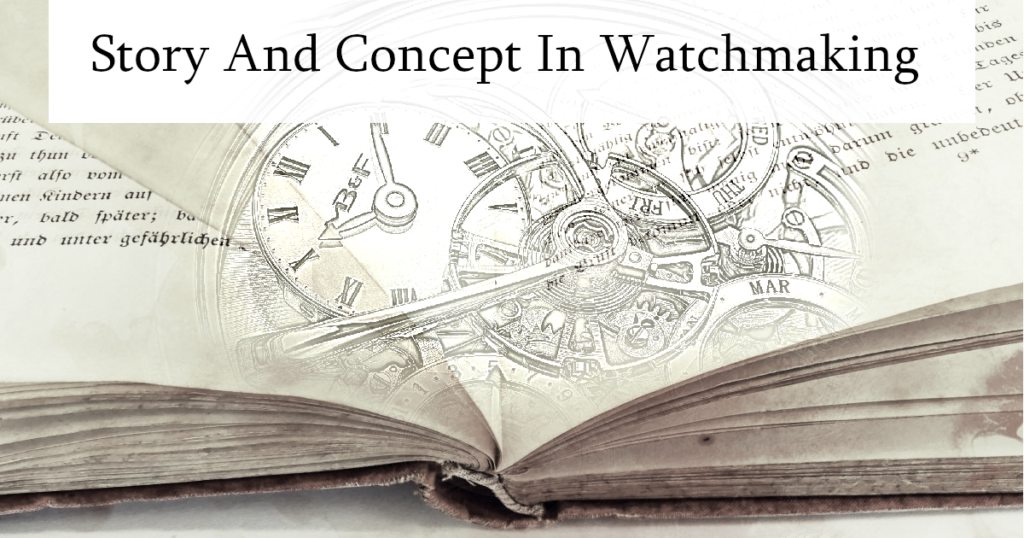
Sections of this article:
- Watches as more than functionality. Art as more than beauty.
- Story and concept in watch brands
- Watches relating to other fields
- Watches as art
- Story and concept in fine art and art jewellery
- Concepts and stories behind the UnconstrainedTime brand and watches
Introduction
Story and concept in watchmaking relates to changes as societies evolve, and to the fascinating development of the watch industry itself. There are a wide range of different ways a brand, and a watch, have a story and relate to various types of concepts. How all this works is becoming increasingly important in today’s world. This article explores why story and concept are such an important part of current horology and how they are used.
Watches As More Than Functionality. Art As More Than Beauty.
As the standard of living has continued to rise for nearly everyone in the world, and the functionality of the things we actually need in life are, these days, taken for granted, there’s increasing emphasis on going beyond mere necessity and survival, into areas like creativity, individuality, aesthetics and style. This evolution of societies has had a profound affect on the development of watches, from their origin of wristwatches as women’s decorative items, through periods of emphasis on functionality in pocket watches then wristwatches for men, and more recently, increasing focus on style and personal aesthetic choice, whether it be traditional or innovative.
A great example of a functional watch . . . this image shows the back and front of a watch with a detachable face guard, made around 1914 in England, issued to Private Percy Broady, 2nd Battalion, Auckland Infantry Regiment, worn during the war:
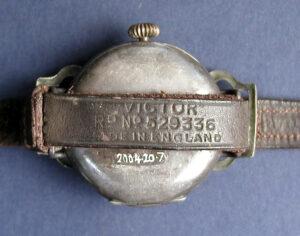
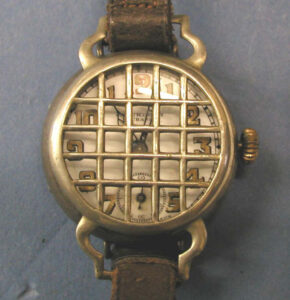
Early wristwatches, only available to the wealthiest of women, were highly decorated, and entirely about how they looked (their accuracy was very poor). The buyer (who was often a different person from the wearer) would know something about the watchmaker they were buying from. With various developments in watch technology, accuracy continually improved, and became the most important factor for the majority of watches, although they were still decorated.
With the industrial revolution, the availability of watches for most of the population, and the further emphasis on pure functionality, it was the brand that mattered (not the individual craftsman) in terms of accuracy and reliability. These days, with everyone having the exact time on their smartphone, the story and concept, relating to influences, style and aesthetics as well as the personalities involved, are one of the main factors that distinguishes watches from one another, with mechanical watches often being chosen at the higher end of the market for various reasons despite their lower accuracy than alternatives with quartz timekeeping.
We buy luxury items because we want them, not because we need them. This, to some degree relates to the difference between design, which is focused on functionality, and art which is not.
HYT watches:
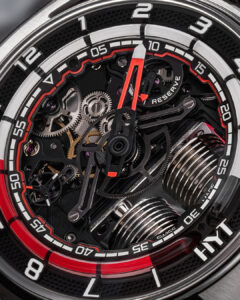
A lot of the functionality in today’s watches is not necessary functionality, but is rather an impressive feat of engineering which can be used as a story, such as the fluidic time display in the HYT watch above. Or as another example, not many people actually need to know the exact position of each of the planets, but a watch that can do that impressive feat of mechanical engineering has something significant which can be talked about, which is what matters. This can also be seen in the moving model of a car engine inside the watch I talk about below.
Art is more than something that’s pleasant to look at. One of the defining factors of art (see below for a summary of the other factors), is that it makes you think about concepts, or evokes deep emotional responses.
People today want uniqueness and individuality, innovation and/or tradition. People are now more interested in the artistic rather than functional attributes (such as story, concept, aesthetics etc.) of items like watches, than they ever have been, especially since the practicality of timekeeping is no longer really necessary on a watch, and certainly not its main function, as shown by the existence of the Haldimann H9, a watch which has no time-display function at all, yet is obviously accepted as a watch:
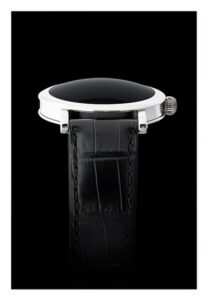
Story And Concept In Watch Brands
It is said that storytelling is key to branding in today’s world. Narratives link to the unique aspects of a product as well as evoking emotions, and give the buyer something to relate to and talk about.
Early watch adverts were about accuracy, reliability and materials:
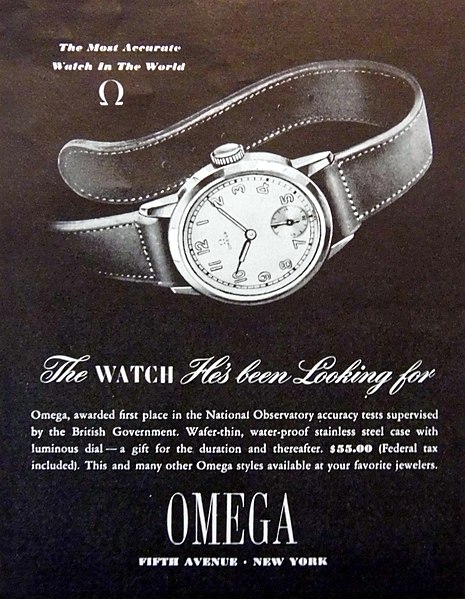
Much of the marketing of timepieces today is about conceptual and narrative aspects of the watch and the brand, which often includes where they are made.
Swiss watchmaking is renowned throughout the world today. One significant factor in its origin is the political suppression in the middle of the 16th century, when the reformer Jean Calvin forbade the wearing of ornamental objects, which shows how significant they were (and still are) to society. This led many jewellers in the area to turn to watchmaking, applying their skills and perspectives to timepieces.
The industrial revolution made watches available to everyone, inspiring high end watchmakers to focus on what distinguished their products from mass-produced purely functional options. Then the quartz crisis resulted in further polarization between functional watches and beautiful, prestigious timepieces.
Many of the key inventions in watchmaking originated in Switzerland, including the perpetual watch, the chronograph, the flyback and the pendant winding watch.
The best known of the ultra luxury watch brands are Audemars Piguet, Patek Philippe, and Vacheron Constantin, all from Switzerland. Each of their logos and brand colours includes a shade of gold or similar colour, and states the place of origin. Unlike the luxury and high end luxury brands which typically focus on the watches themselves, these ultra-luxury watches have more focus on other things they relate to, such as art, concepts, context, lifestyle, and the people involved. They typically refer to history, craftsmanship and innovation as well as linking to the arts (see below).
An example of a captivating story comes from the Swiss brand Audemars Piguet. Established in 1875, this manufacturer is renowned for its innovative designs and technical prowess. The Royal Oak:
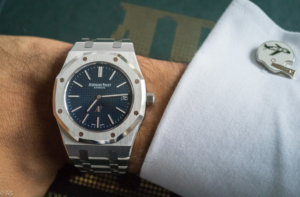
. . . launched in 1972, was a ground-breaking stainless steel luxury sports watch designed by the legendary Gérald Genta. Its octagonal shape and exposed screws defied traditional conventions, revolutionizing the industry and influencing subsequent watch designs.
Another example of a narrative focusing on history and heritage comes from Patek Philippe, a venerable name in watchmaking, who boast a rich heritage dating back to 1839. Patek Philippe watches are marketed as cherished family heirlooms, passed down through generations. The brand’s commitment to tradition and innovation is epitomized by their slogan, “You never actually own a Patek Philippe. You merely look after it for the next generation.”
Watches Relating To Other Fields
In addition to their own origin, history and focus, some watches or brands relate to other fields, such as sports, space or significant events. This forms a significant part of the story of the watch.
Some of these relationships go deep, such as the Cartier Santos watch invented specifically for use in aviation, which then had a significant influence on watch design ever after:
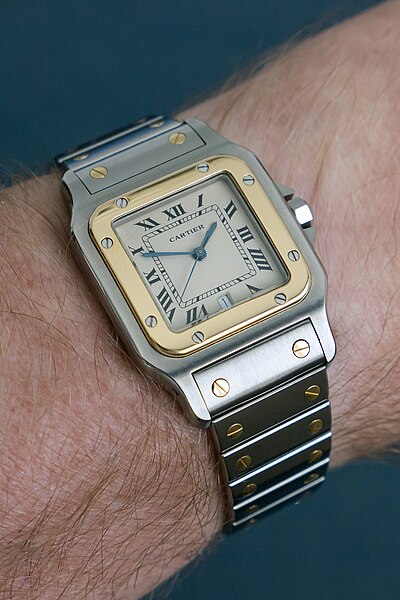
Automobiles
There are many watches which have some degree of a relationship with automobiles. Some are merely an otherwise standard watch with a car logo added to the dial. Others have a much more genuine relationship. For example . . .
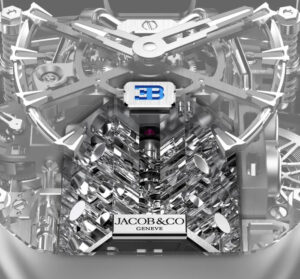
The Jacob and Co. Bugatti Chiron Tourbillon (above), includes a moving model engine inside the watch . . . “push the right-hand crown of the timepiece and the engine comes to life – the crankshaft turns and the 16 pistons pump up and down, just like a true internal combustion engine. Two “turbochargers” (down from four in the actual Chiron engine) on the side of the engine block spin while the engine runs, adding to the visual impact.”
One of the best-known examples is the partnership between Rolex and the automotive realm. The Rolex Daytona:
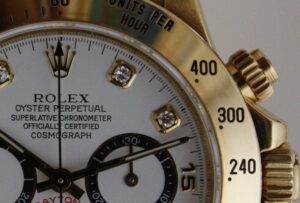
. . . introduced in the 1960s, is named after the legendary Daytona International Speedway. With its chronograph function and tachymeter scale, the Daytona has a significant relationship with the world of racing. The watch’s association with the Rolex 24 at Daytona, one of the most prestigious endurance races, further solidifies its connection to motorsports.
TAG Heuer is another brand deeply entrenched in the automotive world. The TAG Heuer Monaco:
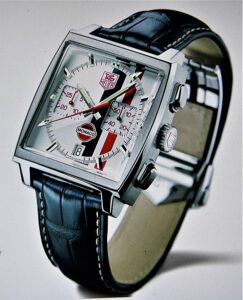
. . . famously worn by Steve McQueen in the film “Le Mans,” is a cult classic. Launched in 1969, the Monaco was the first square-cased automatic chronograph, breaking conventions and capturing the zeitgeist of the era. Its bold design and association with the world of racing make it a coveted timepiece among collectors.
Breitling’s collaboration with Bentley has produced limited edition watches that blend aviation and automotive aesthetics. The Breitling for Bentley collection:
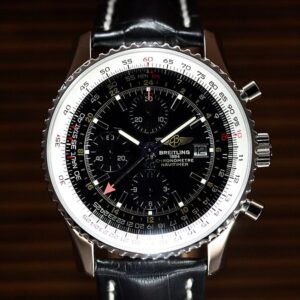
. . . features sophisticated chronographs with intricate details, mirroring the luxury and performance associated with the British carmaker. The partnership underscores the synergy between precision timekeeping and the engineering prowess of high-end automobiles. Breitling also patented the pocket-watch tachymeter for measuring the speed of a racing car.
Aviation
Many of the fundamental design principles that most wristwatches still follow, came from practicalities of aviation and car racing, with pilots and drivers needing to be able to check the time easily without taking hands off the controls.
Breitling has one of the strongest relationships between a watch brand and aviation. The Breitling Navitimer:
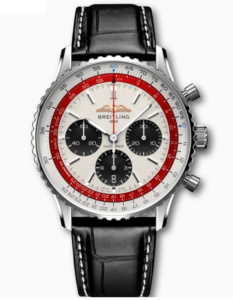
. . . is a prime example, introduced in 1952 as a pilot’s tool. Its iconic slide rule bezel allows aviators to perform various calculations, making it a useful instrument for navigation.
Similarly, the Omega Speedmaster:
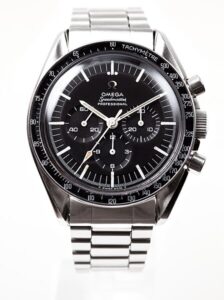
. . . has achieved legendary status not only in space (more about that below) but also in aviation. Originally designed as a racing chronograph, it became the first watch worn on the moon during the Apollo 11 mission. Its robust construction and precise timekeeping capabilities have made it a favourite among pilots and astronauts alike.
IWC Schaffhausen’s Pilot’s Watches:
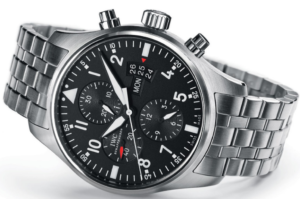
. . . pay homage to the brand’s aviation heritage as well as their influence by German precision engineering. The Big Pilot’s Watch, with its oversized crown and clear, legible dial, reflects the design of cockpit instruments. The Spitfire and Top Gun editions further underscore IWC’s commitment to aviation-inspired timepieces.
Bell & Ross, a brand founded by a team of aviation enthusiasts, specializes in creating watches inspired by cockpit instruments. The BR 01 collection, particularly the BR 01-92 and BR 01-94 models, draws direct inspiration from aircraft instrument panels, featuring square cases reminiscent of cockpit gauges:
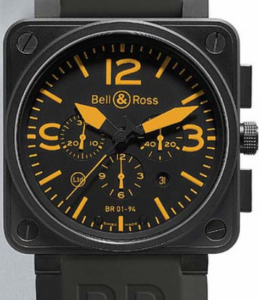
Space
There are several different ways that watches link to space. For example, in 1815, Louis Moinet designed a pocket stopwatch for astronomers, which was the first ever chronograph on a watch.
The most famous space watch is surely the Omega Speedmaster (shown above). In October 1964 NASA asked watchmakers to submit watches suitable to be used in space. After a series of extreme tests, including temperatures from 93 C to -18 C, forces up to 16G, vibration and near vacuum, only the Omega still worked, and received NASA certification. To this day, the Speedmaster is still flight-qualified by NASA.
Another noteworthy example is the Seiko Spacewalk:
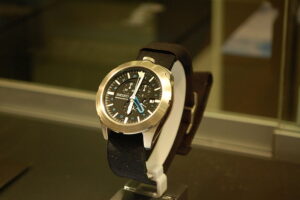
. . . designed for the Russian cosmonaut, Sergey Krikalev. This timepiece, equipped with a Spring Drive movement, endured the challenges of space, emphasizing Seiko’s commitment to innovation beyond Earth’s atmosphere.
The Bulova Lunar Pilot was taken into space, as a backup watch, by US astronaut Dave Scott during the Apollo 15 mission in 1971:
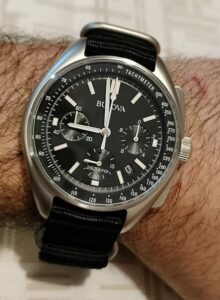
Diatom watches are probably the only brand which actually sends every one of their watches into space, as well as having a piece of authentic meteorite and containing metal from an Apollo command module in each. The story of their watches includes: “Each fully assembled timepiece is flown on a mission to space before finding its way to your wrist.”
With a different kind of space influence . . . The MB&F space pirate was inspired by a Japanese anime TV series from the 1970s and 80s: Capitaine Flam (Captain Future in English). His spaceship was made from two spheres connected by a tube, which became the basis of this beautiful and extraordinary space-influenced watch:
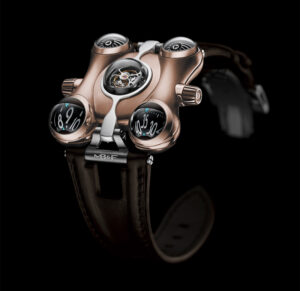
For more on space watches, you might like to read the Hodinkee article: “Think You Can Name Every Single Watch That’s Ever Gone To Space?”
Sports
Hublot has seamlessly integrated itself into the world of football (soccer), establishing high-profile partnerships and becoming the “Official Timekeeper” of FIFA. This Swiss luxury watch brand has crafted special edition timepieces in collaboration with renowned clubs like Juventus, and AFC Ajax, as well as legendary figures like Pelé and Maradona. Hublot’s commitment to the beautiful game is further evidenced by its presence at major soccer events, including the FIFA World Cup. By merging precision watchmaking with the passion and global appeal of football, Hublot has solidified its position as a key player in the intersection of sports and horology. They also have links with athletics and golf.
Laco, known for aviator and maritime watches, renowned for its pilot watches, offers a range of Squad watches (their “Ocean” is shown below, developed with the German Army):
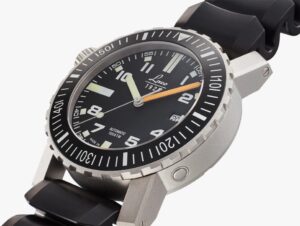
. . . some models are water resistant down to 20 ATM, so can be used for sports such as scuba diving.
Lewis Hamilton, a seven-time Formula 1 World Champion, has forged a dynamic partnership with Swiss luxury watchmaker IWC Schaffhausen. Serving as an IWC brand ambassador, Hamilton’s association with the renowned watch brand reflects a shared commitment to innovation, performance, and precision. IWC has celebrated this collaboration by creating special edition timepieces inspired by Hamilton’s racing prowess and personal style. This synergy between the iconic Formula 1 driver and IWC epitomizes the fusion of motorsport excellence and high-end horology, where both entities symbolize a relentless pursuit of perfection on and off the racetrack.
Rolex, famous for their diving watches:
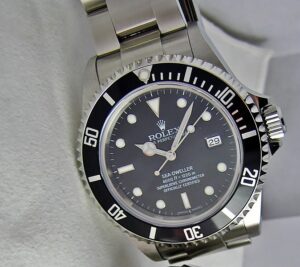
. . . also link to tennis, golf, equestrianism, and yachting . . .
In tennis, Rolex has been a long-standing supporter of major tournaments such as Wimbledon, the oldest and most prestigious tennis championship. The brand’s association with the sport is exemplified through its partnerships with iconic players like Roger Federer. Rolex’s commitment to precision and excellence aligns seamlessly with the demands of tennis.
Golf enthusiasts often associate Rolex with the sport’s elite events, including The Masters, where the brand serves as an official timekeeper:
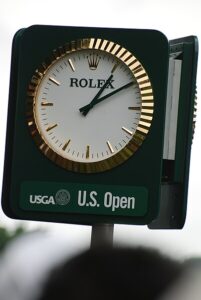
Rolex’s involvement in golf extends to partnerships with top players like Phil Mickelson and Tiger Woods, reflecting a shared commitment to precision, tradition, and performance.
Equestrianism, a world of grace and precision, finds a fitting partner in Rolex. The brand sponsors events like the Rolex Grand Slam of Show Jumping, supporting top riders in their pursuit of excellence. The connection to the equestrian world mirrors Rolex’s dedication to precision and elegance.
Yachting, with its emphasis on precision navigation and cutting-edge technology, aligns naturally with Rolex’s values. The Rolex Fastnet Race and the Rolex Sydney Hobart Yacht Race are among the renowned sailing events supported by the brand. Rolex’s presence in yachting underscores its affinity for maritime heritage and innovation.
Important people
Watches linked to important figures carry a unique blend of history, personality, and often symbolize the wearer’s achievements. One such example is the Patek Philippe Ref. 1518 owned by legendary musician Eric Clapton:
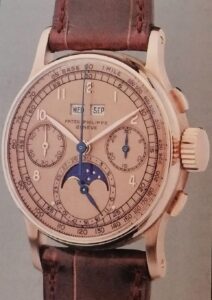
This vintage timepiece is not only a horological masterpiece but also a symbol of Clapton’s refined taste and appreciation for craftsmanship. Other celebrities linked with Patek Philippe include Brad Pitt, Ed Sheeran, LeBron James, and Jay-Z, none of whom were approached by the company, but instead are satisfied customers happy to be linked with the watch brand, which is the most valuable form of ambassadorship a brand can have, as it’s authentic and also free.
Former United States President John F. Kennedy’s Omega Ultra Thin, presented to him by his close friend Grant Stockdale, is another iconic timepiece with historical significance. This watch, engraved with a dedication, represents a personal connection between the giver and the recipient, making it a tangible piece of political history.
Actor and racing enthusiast Paul Newman’s Rolex Daytona:
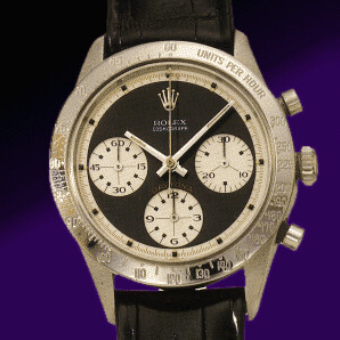
. . . commonly known as the “Paul Newman Daytona,” became a symbol of cool and is highly sought after by collectors. The watch’s association with the charismatic actor adds a layer of cultural significance, making it an iconic timepiece beyond its technical merits.
Queen Elizabeth II’s enduring connection to the Jaeger-LeCoultre Calibre 101 is a testament to the brand’s craftsmanship. This ultra-thin mechanical marvel has been a favourite of the Queen, showcasing a blend of regality and precision.
These watches feature their links to significant people as important parts of their story.
Important events
Watches linked to significant historical events often become cherished artefacts, embodying the spirit and context of their time.
The Rolex Submariner:
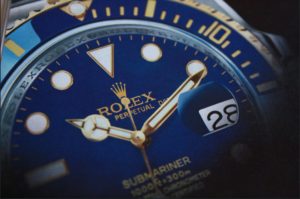
. . . is a watch entwined with historical moments, notably recognized for its role in the 1962 underwater mission, the Trieste Deep Dive, reaching the deepest point in the ocean.
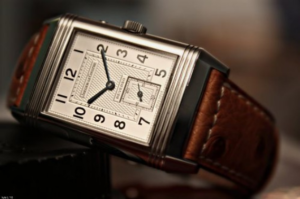
. . . initially designed for polo players has also become linked to significant events. During the 1930s, the British Army stationed in India ordered the Reverso with personalized engravings as a token of appreciation for officers. This connection to a specific historical context enhances the watch’s allure.
The Breitling Emergency:
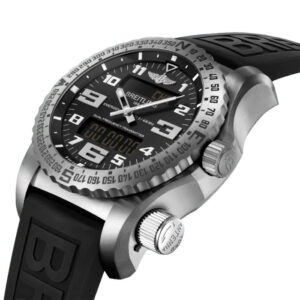
. . . is a unique timepiece with a distress beacon, which has been used in real-life emergency situations, some of the most significant possible events in the life of the wearer, making it a great choice for adventurers.
These watches transcend their roles as mere timekeepers, becoming witnesses to history. Their links to important events enrich their stories, making them not just accessories but tangible connections to the triumphs, challenges, and milestones of the past.
Watchmaking And The Arts
All three of the best-known ultra-luxury watchmakers have links to the arts:
Audemars Piguet states that their brand “believes in the power of contemporary art to connect and be connected.” They have an international art competition, sponsor studio projects and music festivals.
Vacheron Constantin use the phrase “In the world of recording, timing is everything,”, referring to their link with the legendary Abbey Road Studios in London, and the brand is also linked to the Louvre, one of the world’s most prestigious art institutions.
Patek Philippe displayed a watch owned by famous jazz musician Duke Ellington, at their Grand Exhibition of art and watches, and their museum includes watches and enamels dating as far back as the 16th Century.
Omega watches play a role in numerous 007 movies. The brand says “Since 1995, James Bond has worn an OMEGA Seamaster in every film.” An example of an Omega Seamaster is show below:
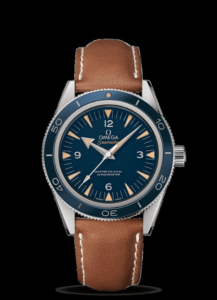
And, of course there are numerous collaborations between watchmakers and artists.
An interesting example of collaboration (not mentioned on the above link) is . . .
The Jaquet Droz Loving Butterfly Automaton draws inspiration from the brand’s historical automaton creations. This watch not only tells time but also features a delicately animated butterfly, showcasing the fusion of watchmaking precision and artistic storytelling:
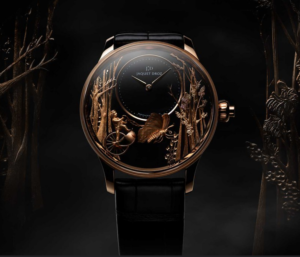
Watches As Art
There are a lot of watches marketed as “art” these days, but can a watch really be art?
The factors that are commonly agreed to define art, are these:
- Art is enjoyed for its own sake, not for its practical usefulness.
- Art is focused more on aesthetics than on functionality
- Art has special focus
- Art is unique
- Art is creativity relating to conceptual ideas used as a means to communicate, evoke emotions and present challenging perspectives and concepts.
- Art is personal
Also, decorative arts are considered to be design rather than art. This is a significant factor when considering watches as art, because a lot of watches that are marketed as art are really a watch with some art added as decoration, such as an otherwise typical watch with some art on the dial. There are few watches where the watch and the art are inseparable (see below).
For more details on each of the above factors see my article “Are watches art?”
Story And Concept In Fine Art And Art Jewellery
As mentioned above, communicating concepts or evoking profound emotions is one of the defining factors of fine art as distinct from design or craft-work.
All three of the big names in the ultra-luxury sector of the horology market, link themselves to the arts, so art as a concept becomes part of their story.
Watchmaking and jewellery have always been strongly linked. As I noted earlier in this article, the first wristwatches were more jewellery than timepiece, and many jewellers in Switzerland became watchmakers. Through most of the history of watchmaking, all jewellery was fine jewellery (or the costume jewellery which imitates it with less expensive materials).
It was only in the 20th Century that art jewellery evolved, although it has strong links to some of the art movements a few decades earlier. Unlike the expensive materials, simple geometric forms and smooth polished surfaces of fine jewellery, art jewellery encompasses a wider range of aesthetics, including complex, organic, or broken forms and surfaces, as well as a much wider range of materials:
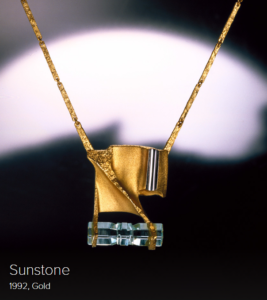
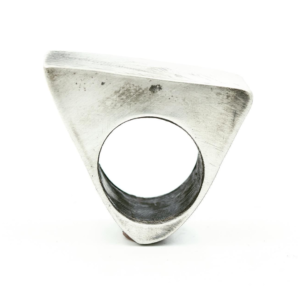
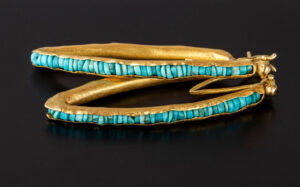
Also, some art jewellery, being art rather than design or artisan craft-work, includes a communication of concepts or evokes profound emotions. Conceptual art jewellery is very much about story and concept.
The broadening range of watchmaking creations now includes some watches with significant influences from art jewellery, including complex forms and deliberately unpolished surfaces such as the raw machined surface on Ochs Und Junior watches, or the deliberately rough 3D printed textures on parts of Holthinrichs watches.
The use of stories and concepts which is now part of the world of horology is also a link more to art jewellery than fine jewellery, although this doesn’t seem to be understood yet.
Concepts And Stories Behind The Unconstrainedtime Brand and Watches
Our brand story is unusual. This is partly because I have no training as a conventional watchmaker . . . my background is in fine art and cutting-edge contemporary music composition.
Traditional watchmaking emerged from two primary sources: engineering and fine jewelry. While these roots have produced extraordinary timepieces, they’ve also created invisible constraints around what a watch can be. We chose a different path.
Drawing from the ancient tradition of the 12-point time ring – a concept that dates back to ancient Near East timekeeping – we stripped away conventional limitations. What remained was the simple heart of a time display that freed the rest of the watch to become a canvas for genuine artistic exploration.
Each UnconstrainedTime piece is conceived and developed as a unified artistic vision. From our world-first 3D fractal concept to interpretations of musical genres, every watch represents a unique creative journey. These aren’t simply timepieces with artistic elements – they are wearable sculptures that tell time. Each one including its creator’s signature and produced in small, considered quantities.
I created several UnconstrainedTime sculptures/watches before I even thought about anything like brand, marketing or how my artistic creations might fit with other fields. When I was creating these initial creations for what later became our brand, I had no knowledge of the watch industry . . . I didn’t even know what a “microbrand” was.
I was happy to find out, after several watches were already created and rendered in 3D, that what I was doing aligns well with the desire for uniqueness and creativity of some microbrand enthusiasts, and can also be seen as part of the world of conceptual art jewellery.
Our watches are unusual in that the art and the time-display are part of a single creation . . . unlike other artistic watches that simply decorate conventional designs, our entire timepiece is conceived as a unified artistic statement – making us the first brand to truly unite the worlds of fine art and horology.
Each of our watches is a unique creative starting point with its own story and concept, not a minor variation on another of our watches. While they are each very different aesthetically, they also make sense as a brand and as a series of my own personal explorations (although we do welcome other creators too, with our collaborations and open design competition).
While I am not manifesting as literal an autobiography as Mr. Büsser of MB&F, where his series of watches celebrate the obsessions of his childhood, so, as he says “I’m writing my autobiography,” my creative explorations do certainly come from my obsessive areas of interest as any fine artist will have . . . examples of my personal aesthetic focuses include fractals (below) and the beauty of organic forms and textures, abstraction, and the essence and aesthetics of musical genres.
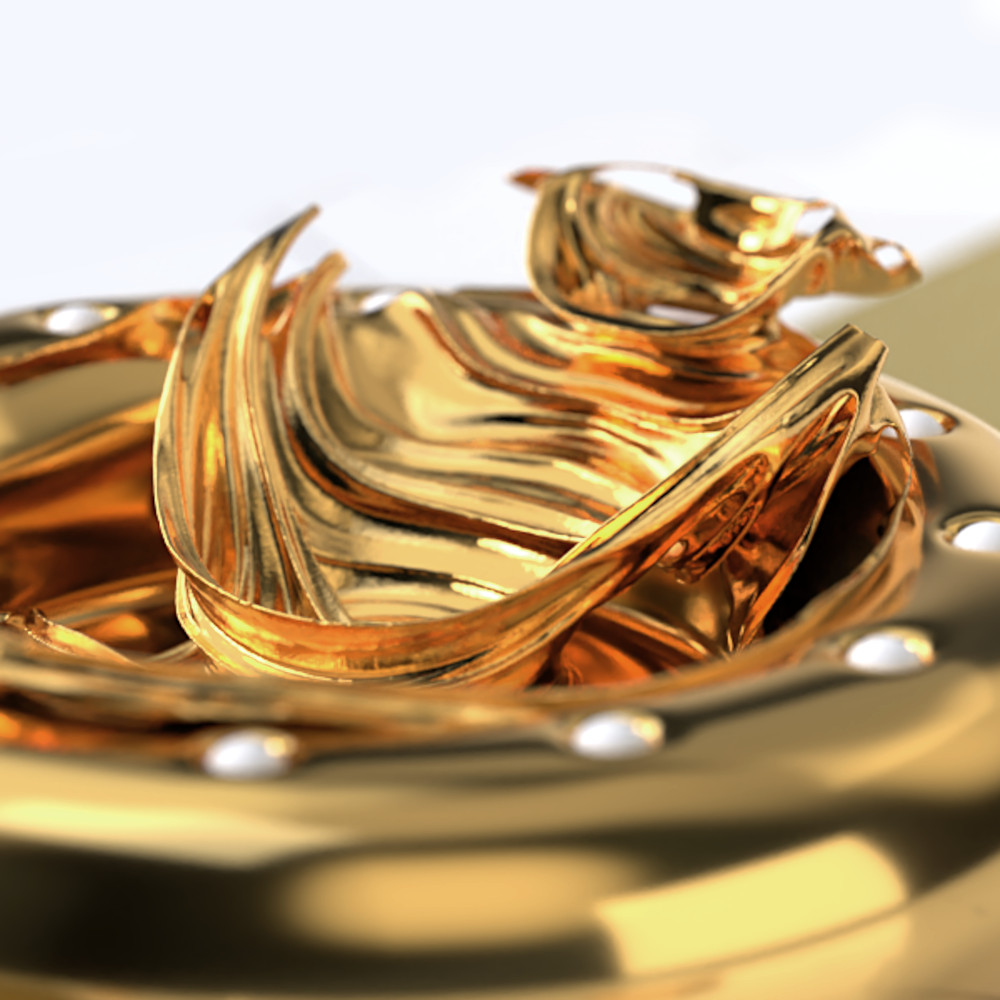
We’ll be launching soon with Fractal Emergence (above), the world’s first 3D fractal watch, so . . .
Make sure you don’t miss our launch!
Subscribe now for notifications.
What do you think are the most interesting stories and concepts in watchmaking? Let us know your views in the comments below, and on our social media.
Author: Chris Melchior

This article was authored by Chris Melchior, founder of UnconstrainedTime and creator of the original range of wrist-worn sculptures of this unique artistic adventure.
Chris has extensive knowledge and experience of creativity, including fine art and cutting-edge contemporary music composition, and was awarded a First Class Honours Degree in fine art and music with a minor in philosophy.
Chris’s life-long artistic obsessions include organic forms and textures, abstraction, fractals, and the aesthetic essence of musical genres.
He has developed unusually deep insights into the elemental concepts underlying areas including Eastern and Western philosophies, science and technology, creativity and the arts, as well as empirical spirituality in which he is acknowledged as a leading authority.
He has a profound fascination and love for the unique and synergistically creative combination of fine art with the ancient essence of time-keeping which evolved into the UnconstrainedTime project.

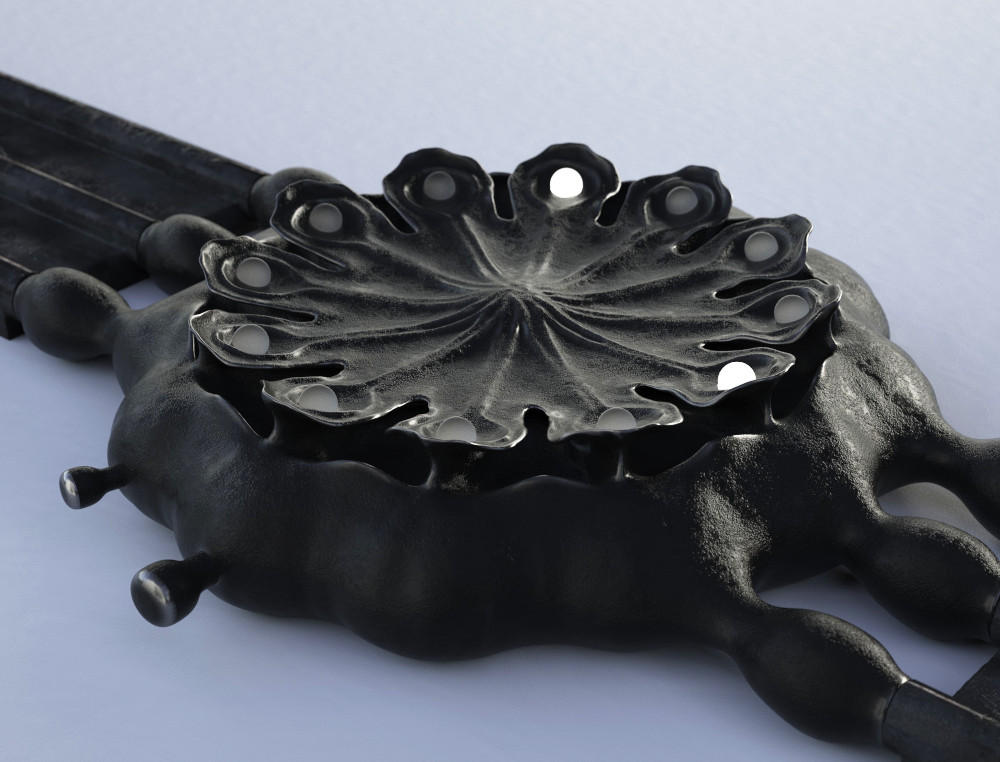
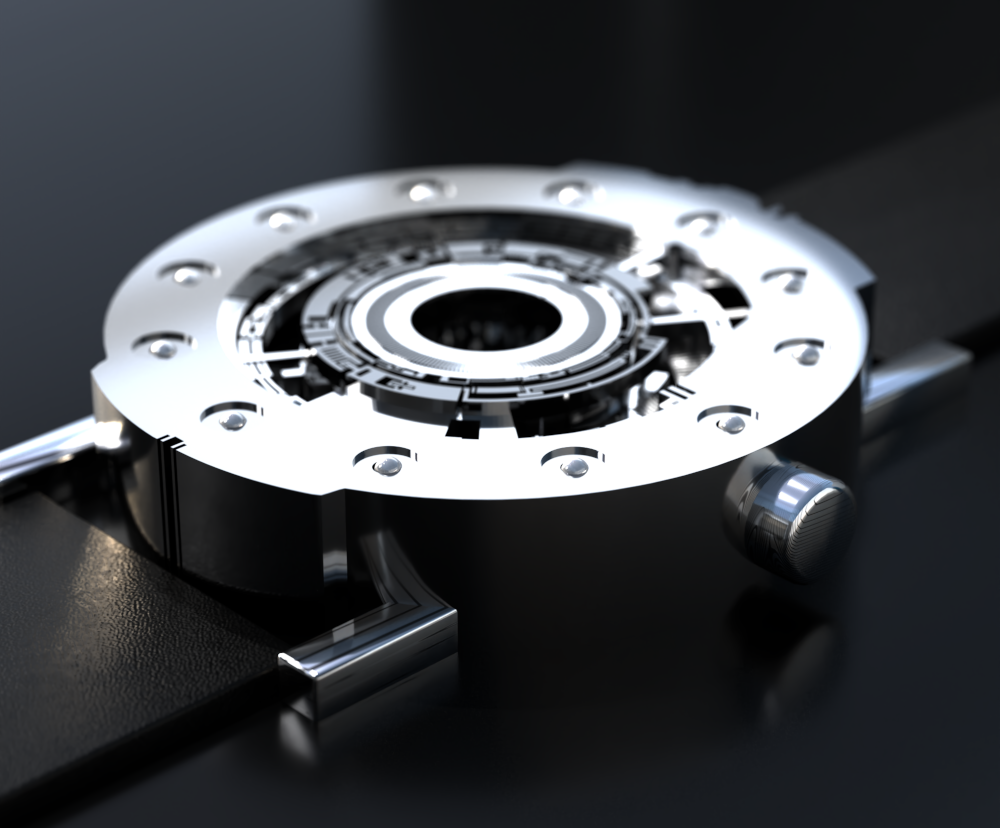
Leave a Reply